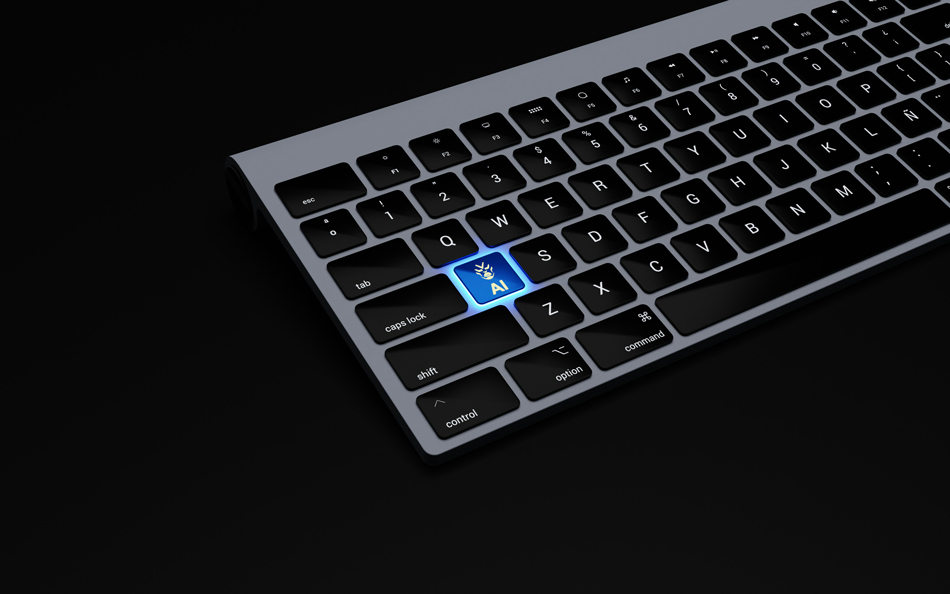19th October, 2024
As we head into 2025, website design continues to evolve at an exciting pace, driven by advances in technology and changes in user expectations.

With businesses and individuals more reliant than ever on creating digital experiences that stand out, it’s crucial to understand the design principles that will define the year ahead. Whether you’re planning a website redesign or building one from scratch, keeping these 2025 web design principles in mind will help you stay ahead of the curve.
1. Minimalism with Purpose
Less is more in 2025. Minimalist design focuses on eliminating unnecessary elements while maximising functionality and clarity. A clean, simple design will not only look more modern but will also help guide your audience to focus on key messages or actions. Minimalist designs load faster and offer a better user experience, especially on mobile devices. It’s important, however, that minimalism doesn’t come at the expense of usability or communication—every element on the page should serve a purpose.
2. Brand and Design Consistency
Consistency is key to a memorable user experience. From the colour palette to typography and imagery, every aspect of your site should reflect your brand’s identity. In 2025, expect to see an increased focus on brand cohesion across all platforms and devices. Ensure that your website maintains a cohesive visual language to reinforce your brand’s voice and identity. This consistency builds trust and improves user engagement, especially when users visit your website from different devices or platforms.
3. Mobile-First Design
With mobile browsing consistently outpacing desktop usage, mobile-first design is no longer an option—it’s a necessity. In 2025, designing for mobile users should be your primary consideration. Mobile-first design means that websites are optimised for smaller screens first, ensuring fast load times, easy navigation, and clear readability on smartphones and tablets. This approach allows you to create a seamless experience for mobile users while ensuring that the desktop version remains effective.
4. Accessibility
Website accessibility will continue to be an essential principle in 2025. Ensuring that your site is usable for all individuals, including those with disabilities. Key accessibility considerations include ensuring proper contrast between text and backgrounds, adding alt-text for images, and making sure your website is keyboard navigable. Leveraging tools like screen readers and creating content that’s easy to digest for users with visual, auditory, or cognitive impairments is essential for reaching the widest possible audience.
5. Usability & Intuitive Navigation
User-centric design is at the core of every successful website, and usability is a key aspect of this. In 2025, websites should be designed with an intuitive, logical flow, ensuring that users can find the information or service they’re looking for quickly and efficiently. Intuitive navigation, simplified layouts, and clearly defined CTAs (calls-to-action) will help reduce friction and keep users engaged. Website usability testing, whether through analytics or direct user feedback, is a great way to assess and continuously improve this aspect.
6. Immersive Visuals and Micro-Interactions
While minimalism is on the rise, visuals are still a huge part of creating engaging websites. In 2025, expect to see more immersive visuals such as dynamic images, videos, and subtle animations. Micro-interactions, which are small visual or interactive effects (like a button changing colour when hovered over), can make the user experience more engaging and intuitive. Just be sure not to overdo it—these elements should enhance, rather than overwhelm, the user experience.
7. Sustainability and Performance Optimisation
With users increasingly concerned about environmental issues, web designers in 2025 will place more emphasis on sustainability. This means creating lightweight, performance-optimised websites that reduce server loads and energy consumption. Optimising images, using fewer third-party scripts, and ensuring fast loading times will contribute to a more eco-friendly web while improving the overall user experience. A fast website is not only better for the environment but also for SEO, as search engines like Google factor loading speed into their rankings.
8. AI and Personalisation
Artificial Intelligence (AI) continues to make waves in web design, and 2025 will see a further rise in personalisation through AI-driven technologies. Websites will adapt to individual users’ preferences, providing personalised content, product recommendations, and even customised layouts based on browsing history and behaviour. This level of personalisation helps build stronger relationships with users, creating a more tailored experience that can significantly increase engagement and conversions.
9. Voice User Interface (VUI) Integration
Voice search and voice interactions are becoming more common with the rise of smart speakers and mobile voice assistants like Alexa, Google Assistant, and Siri. In 2025, optimising websites for voice search and incorporating Voice User Interface (VUI) features can set you apart. This could include adding voice navigation options or optimising content for voice-based queries. Designing for voice interaction will improve accessibility and convenience for a growing audience of voice users.
10. Data-Driven Design Decisions
In 2025, more websites will be shaped by data than ever before. Analytics and user feedback will drive key design decisions, helping businesses refine their websites to better suit their audience’s needs. From heat-maps to A/B testing and user behaviour analysis, data should inform every step of the design process. This ensures that your website is not just visually appealing but also highly effective at converting visitors into customers or subscribers.
Conclusion
Website design is more than just creating visually appealing pages – it’s about ensuring that every design choice enhances the user experience, boosts performance, and stays aligned with brand goals. By focusing on these principles – minimalism, brand consistency, accessibility, mobile-first design, and more – you can create a website that not only stands out visually but also functions seamlessly across all platforms and delivers real value to users.
Need help designing a modern website? Get in touch with Tidy Design today! Our team is ready to create an innovative and user-friendly website that aligns with your business goals. Thanks for reading Website Design Principles 2025. And thanks ChatGPT for your assistance in creating this post.
Until next time, keep it Tidy!
Mike